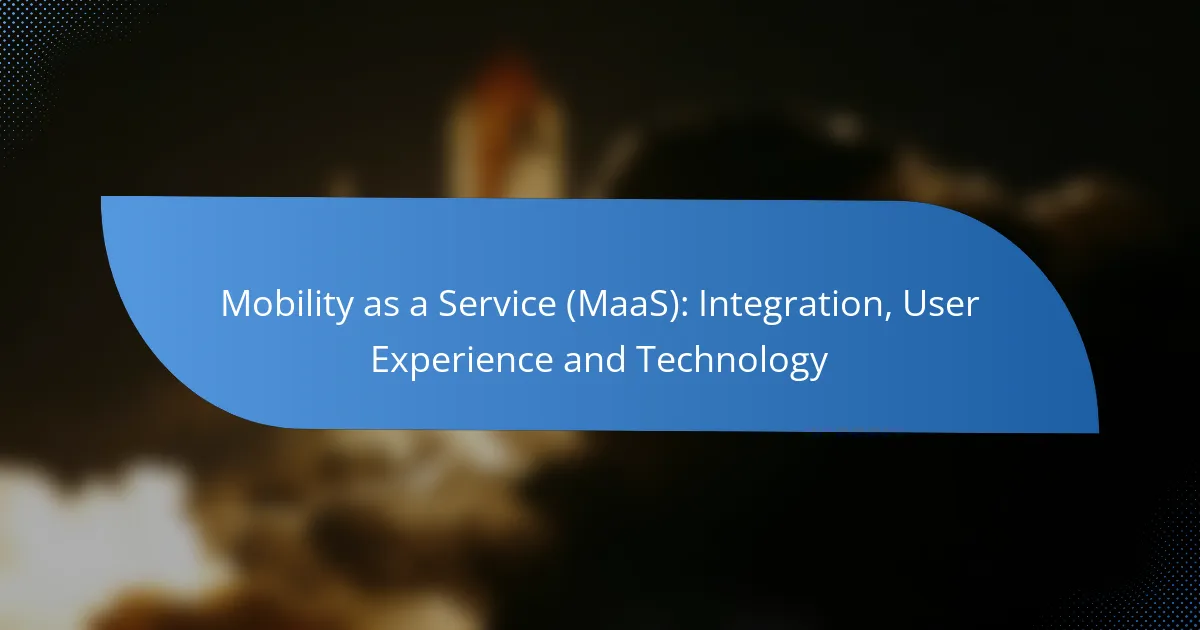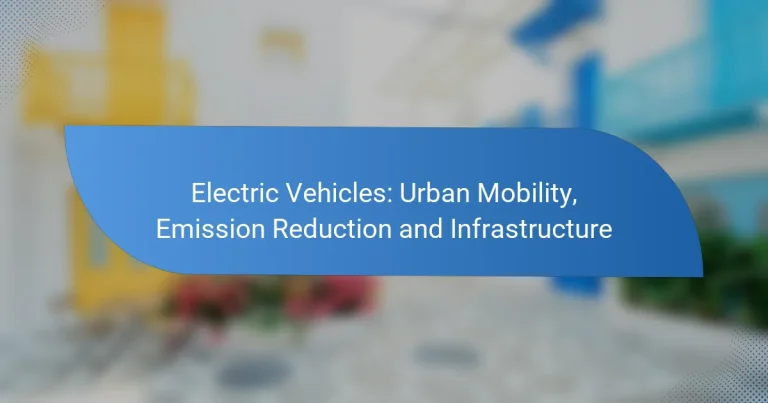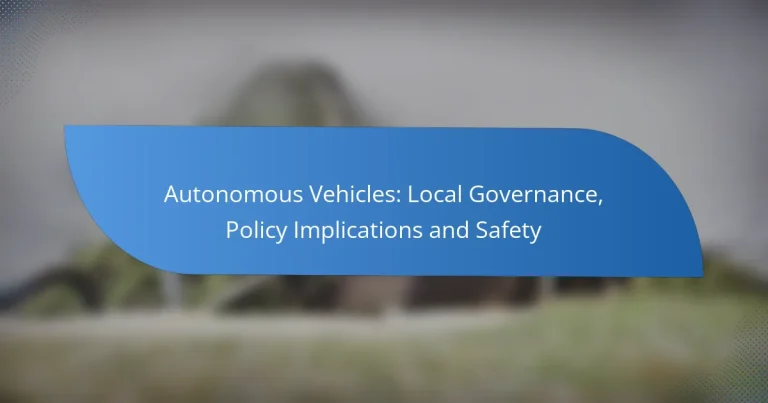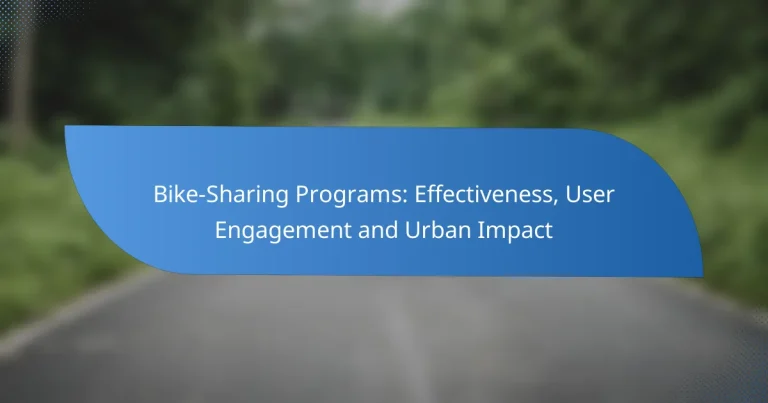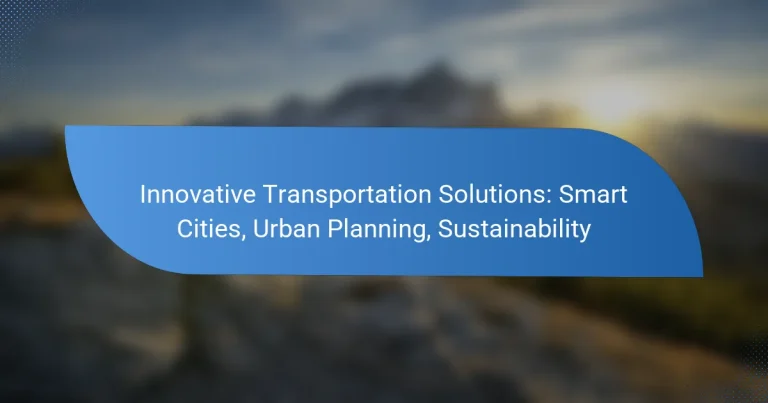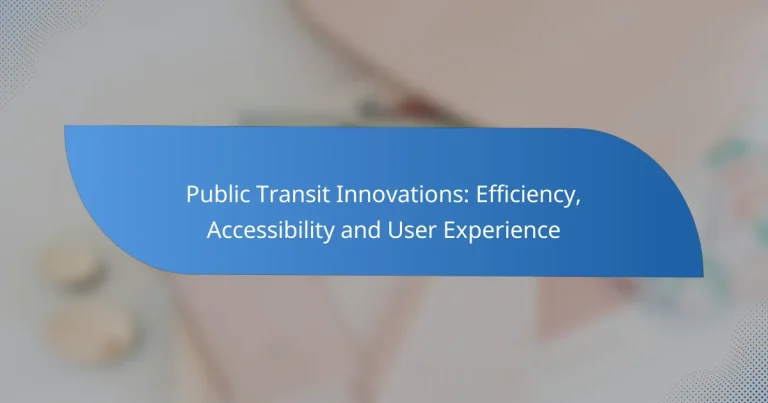Mobility as a Service (MaaS): Integration, User Experience and Technology
Mobility as a Service (MaaS) revolutionizes transportation by integrating various travel options into a single, user-friendly platform. This approach not only simplifies travel planning but also enhances user experience through the use of advanced technologies such as mobile applications and API integrations. By streamlining access to diverse transportation modes, MaaS promotes convenience, cost efficiency, and improved urban mobility for users and communities alike.

How Does Mobility as a Service Improve User Experience?
Mobility as a Service (MaaS) enhances user experience by providing a unified platform for accessing various transportation options. This integration simplifies travel planning and execution, making it more convenient and efficient for users.
Seamless integration of transport options
MaaS platforms combine multiple transport services, such as public transit, ride-sharing, and bike rentals, into a single interface. This allows users to plan their journeys without needing to switch between different apps or services. For example, a user can book a train ticket, reserve a bike, and order a ride all in one transaction.
By offering seamless integration, MaaS reduces the complexity of travel logistics, enabling users to select the most efficient routes and modes of transport. This holistic approach can lead to significant time savings and a smoother travel experience.
Personalized travel planning
MaaS solutions often include personalized travel planning features that cater to individual preferences and needs. Users can input their travel habits, preferred modes of transport, and even budget constraints to receive tailored recommendations. For instance, someone who prefers eco-friendly options may receive suggestions for public transport or bike-sharing over car rentals.
This level of customization not only enhances user satisfaction but also encourages more sustainable travel choices. By aligning transport options with user preferences, MaaS can significantly improve the overall travel experience.
Real-time updates and notifications
Real-time updates are a crucial component of MaaS, providing users with timely information about their journeys. Notifications about delays, cancellations, or changes in transport schedules can help users make informed decisions on the go. For example, if a bus is running late, the app can suggest alternative routes or modes of transport to minimize wait times.
These updates enhance user confidence and reduce anxiety associated with travel uncertainties. By keeping users informed, MaaS platforms empower them to adapt their plans dynamically, leading to a more reliable and enjoyable travel experience.
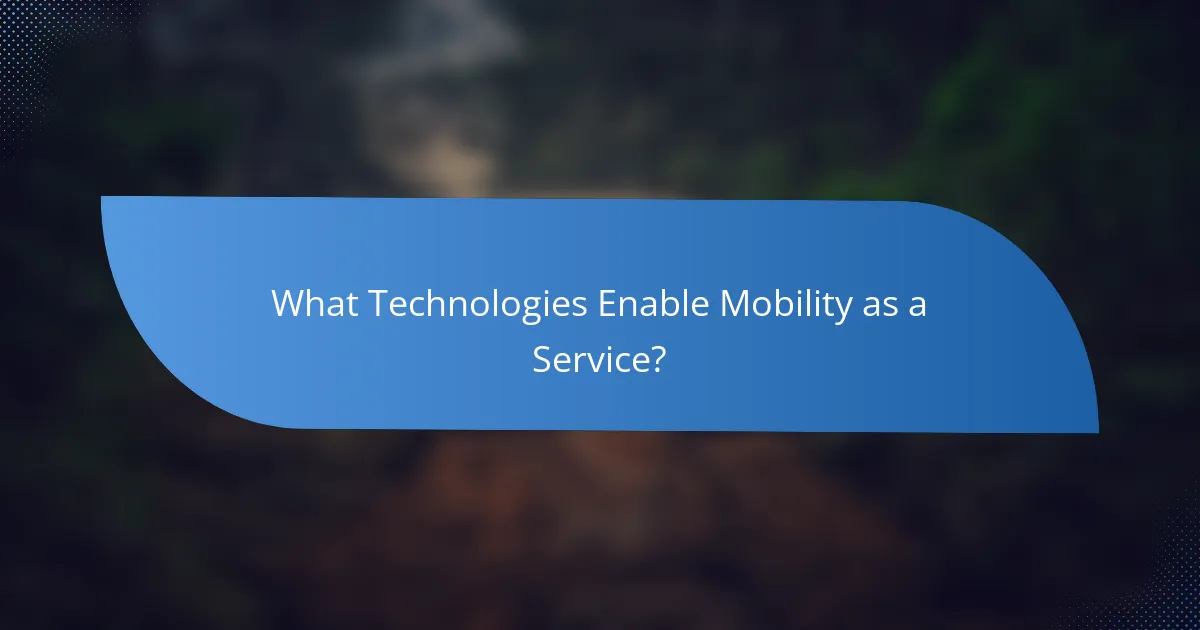
What Technologies Enable Mobility as a Service?
Mobility as a Service (MaaS) relies on several key technologies that facilitate seamless transportation solutions. These technologies include mobile applications, API integrations, and cloud computing, all of which enhance user experience and operational efficiency.
Mobile applications for service access
Mobile applications are essential for users to access various transportation services within a MaaS framework. These apps provide a user-friendly interface for booking rides, checking schedules, and making payments, often integrating multiple transport modes like buses, trains, and ride-sharing.
For effective user engagement, applications should prioritize intuitive design and real-time updates. Features like route optimization and fare comparison can significantly enhance user satisfaction and encourage adoption.
API integrations for data sharing
API integrations are crucial for enabling data sharing between different transport providers and platforms in a MaaS ecosystem. They allow seamless communication, ensuring that users receive accurate information about service availability, pricing, and travel times.
When implementing API integrations, consider standard protocols such as REST or GraphQL for efficient data exchange. This approach not only streamlines operations but also enhances the overall user experience by providing timely and relevant information.
Cloud computing for scalability
Cloud computing plays a vital role in the scalability of MaaS solutions. By leveraging cloud infrastructure, service providers can handle varying loads, ensuring that applications remain responsive even during peak usage times.
Utilizing cloud services also allows for easier updates and maintenance, reducing downtime and improving reliability. When selecting a cloud provider, consider factors such as data security, compliance with local regulations, and the ability to support rapid growth in user demand.

What Are the Key Benefits of Mobility as a Service?
Mobility as a Service (MaaS) offers numerous advantages, including enhanced convenience, cost efficiency, and improved urban mobility. By integrating various transportation options into a single accessible platform, users can optimize their travel experiences while benefiting society and the environment.
Cost savings for users
MaaS can lead to significant cost savings for users by providing flexible transportation options tailored to individual needs. Instead of owning a vehicle, users can access public transit, ride-sharing, and bike rentals, often resulting in lower monthly expenses.
For example, a user might save hundreds of dollars each month by relying on MaaS services instead of maintaining a personal car, which incurs costs like insurance, fuel, and maintenance. Additionally, subscription models can offer predictable pricing, making budgeting easier.
Reduced traffic congestion
By promoting shared transportation methods and reducing the reliance on personal vehicles, MaaS can significantly alleviate traffic congestion in urban areas. When more people opt for public transit or ride-sharing services, fewer cars are on the road, leading to smoother traffic flow.
Implementing MaaS can lead to a decrease in peak-hour traffic, as users are encouraged to travel at off-peak times or choose more efficient routes. Cities that adopt MaaS strategies often see improvements in travel times and overall road safety.
Environmental sustainability
MaaS contributes to environmental sustainability by reducing carbon emissions associated with personal vehicle use. By facilitating access to eco-friendly transportation options, such as electric vehicles and public transit, MaaS encourages users to make greener choices.
For instance, cities that promote MaaS can experience a reduction in greenhouse gas emissions, supporting local and global sustainability goals. Users can further enhance their positive environmental impact by choosing shared rides or public transport over single-occupancy vehicles.

What Challenges Does Mobility as a Service Face?
Mobility as a Service (MaaS) faces several challenges that can hinder its effective implementation and user adoption. Key issues include data privacy and security concerns, regulatory compliance, and integration with existing transportation infrastructure.
Data privacy and security concerns
Data privacy and security are critical challenges for MaaS, as these services rely on the collection and sharing of personal information. Users must trust that their data is handled securely and in compliance with regulations like the General Data Protection Regulation (GDPR) in Europe.
To address these concerns, MaaS providers should implement robust encryption methods and transparent data usage policies. Regular audits and compliance checks can help build user confidence and mitigate risks associated with data breaches.
Regulatory compliance issues
MaaS must navigate a complex landscape of regulatory compliance, which varies significantly by region. Different countries may have distinct rules regarding transportation services, data protection, and consumer rights, complicating the rollout of MaaS solutions.
Providers should engage with local authorities early in the development process to ensure adherence to relevant regulations. This proactive approach can help avoid costly delays and legal challenges that may arise from non-compliance.
Integration with existing infrastructure
Integrating MaaS with existing transportation infrastructure is essential for its success but poses significant challenges. Legacy systems may not be compatible with new technologies, leading to inefficiencies and user frustration.
To facilitate integration, MaaS providers should focus on developing open APIs that allow seamless communication between different transport modes and systems. Collaborating with public transport agencies can also help ensure that MaaS complements existing services rather than competing with them.

How to Choose the Right MaaS Provider?
Choosing the right Mobility as a Service (MaaS) provider involves evaluating their service coverage, user experience, and pricing models. A well-suited provider should meet your mobility needs while offering a seamless and cost-effective solution.
Evaluate service coverage and options
Start by assessing the geographical areas covered by the MaaS provider. Ensure they operate in the regions where you need transportation services, whether urban or rural. Look for options that include various modes of transport like buses, trains, bikes, and rideshares.
Consider the flexibility of the service options available. A good provider should offer multiple transportation choices to accommodate different travel preferences and needs. For example, if you frequently travel for work, a provider with partnerships for corporate transport may be beneficial.
Assess user interface and experience
The user interface of a MaaS platform is crucial for ease of use. Check if the app or website is intuitive and user-friendly, allowing for quick trip planning and booking. A well-designed interface can significantly enhance the overall user experience.
Look for features that improve convenience, such as real-time updates, integrated payment options, and customer support. User reviews and ratings can provide insights into the experiences of others, helping you gauge the reliability and functionality of the platform.
Compare pricing models
Pricing structures can vary widely among MaaS providers. Some may offer pay-per-ride options, while others might have subscription models or monthly passes. Analyze which pricing model aligns best with your travel habits and budget.
Be aware of any hidden fees or additional costs that may arise, such as booking fees or surcharges during peak times. A transparent pricing model will help you avoid unexpected expenses and make informed decisions about your mobility options.
